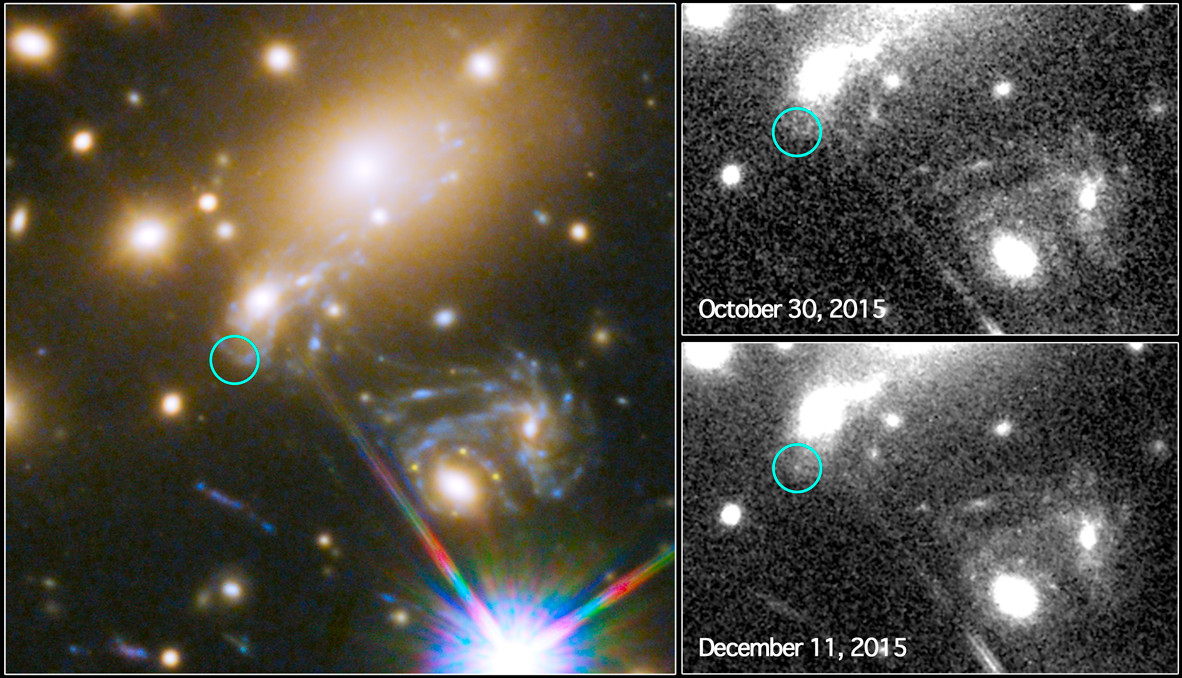Media release
From:
Gravitational lensing of a supernova provides a measurement of the Hubble constant
Science
The time delays between multiple images of Supernova Refsdal, produced by gravitational lensing, provide a new measurement of the expansion rate of the Universe, according to a new study. The Hubble constant quantifies the expansion rate of the Universe; its value is debated, with different methods giving inconsistent results. In principle, the time delays between multiple images of a strongly lensed supernova could provide an independent method of measuring the Hubble constant. However, this approach – known as time-delay cosmography – has not been applied to a supernova. Here, Patrick Kelly and colleagues study multiple images of the gravitationally lensed Supernova Refsdal, which was discovered using the Hubble Space Telescope in 2014. Supernova Refsdal appears in multiple images, produced through gravitational lensing by a massive foreground galaxy cluster. As predicted by models of the galaxy cluster, a new image of the supernova appeared in 2015. Monitoring the brightness of each image for multiple years has allowed the time delays between them to be measured to within 1.5%. Kelly et al. combine that measurement with lens models of the foreground cluster to make a blinded measurement of the Hubble constant, finding a value of ~66.6 kilometers per second per megaparsec. According to the authors, this value is more consistent with the Hubble constant value derived from the cosmic microwave background measurement than that from the cosmic distance ladder method.



 Australia; International; ACT
Australia; International; ACT



